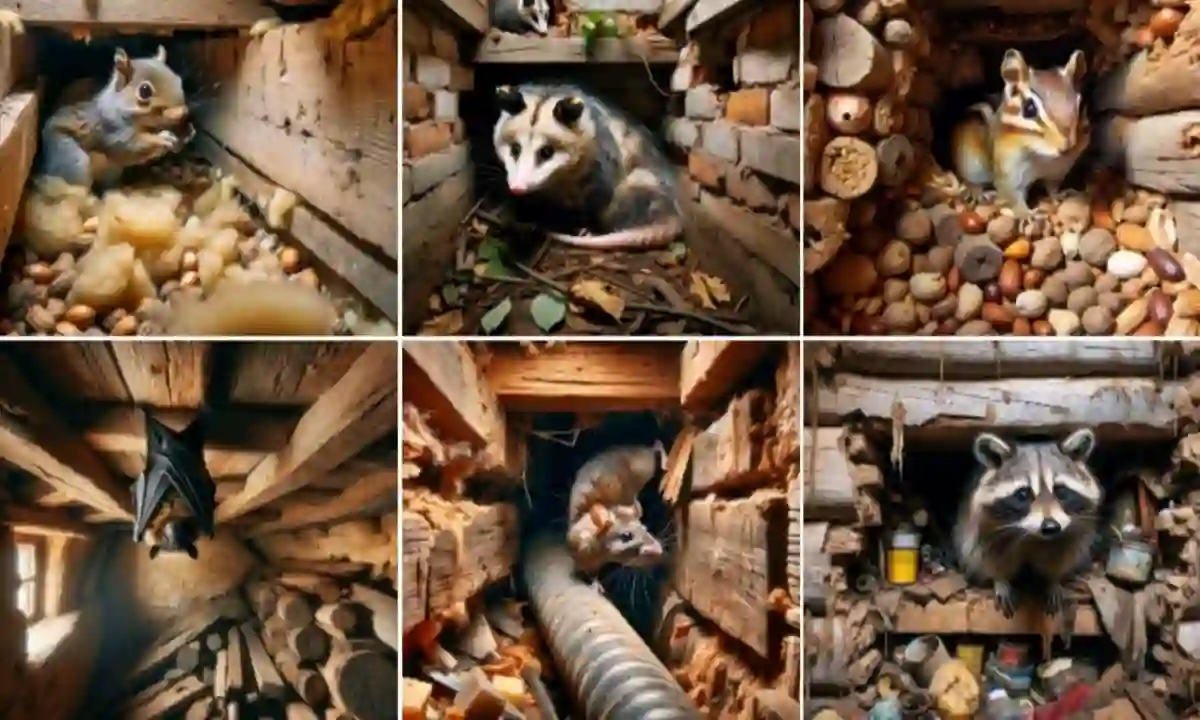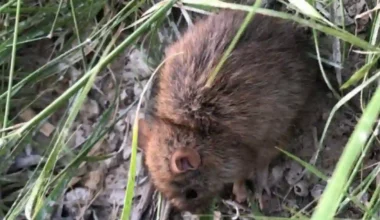If you are having trouble sleeping due to unknown noises at night or you see holes in your drywall, you may have a pest living inside your wall. Now, you need to figure out which type of animal it is, which is where this article comes in handy. Today, we are going to talk about how to tell what animal is in your wall.
When you know what animal is in there, you may even be able to get rid of it yourself, depending on what it is. So, how we are going to structure this article is that we will discuss the common types of animals that invade walls and what steps you can take to get rid of and prevent them permanently.
How to Tell What Animal is in My Wall
We are going to look at 7 different animals and signs that will help you to tell if they are the specific wildlife you have in your wall.
1. Mice
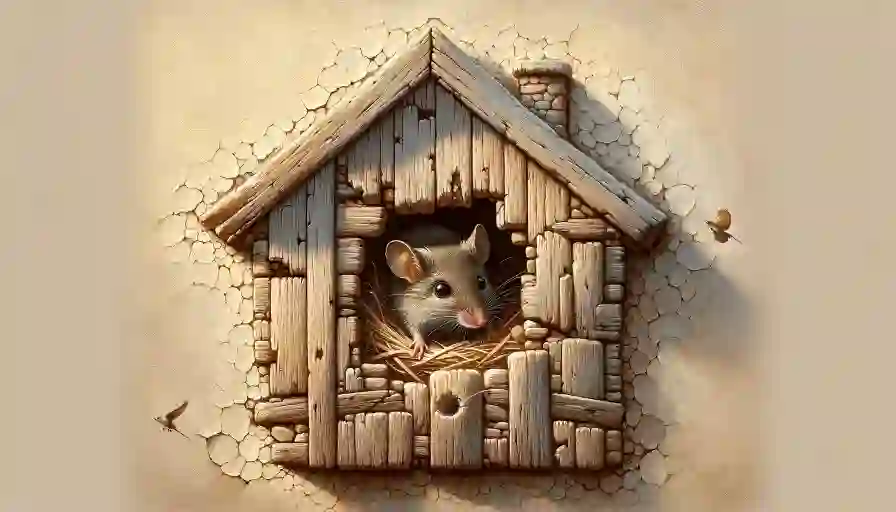
If you have mice in your walls, they are likely entering your home at night to search for food. Check for small, rice-like droppings near your baseboards. Mice might also gnaw through walls, cupboards, or into food packages in your pantry. Any of these signs indicate a mouse presence.
Mice are most active during the night. If you start hearing sounds in your walls after going to bed, it’s probably mice or rats. To distinguish between rats or mice and squirrels, knock on the wall when you hear movement. Rats and mice will stop and stay silent, while squirrels will run away. To make your home less inviting to mice, keep food stored properly and floors clean. Both mice and rats are attracted by food, so keeping it out of their reach helps keep your home free of rodents.
2. Squirrels

At number 2, we have squirrels. These animals are active only during the day and also live in walls. So, if you hear quick scratching sounds in the walls when the sun is up, squirrels might be the problem. The location of the noise can also give you a clue. Squirrels usually prefer attics and higher levels over lower floors. If you notice more squirrels on your roof compared to your neighbors’ houses, it’s a strong sign that the animals in your walls are squirrels. Is it between March and October? Are the noises varied and odd? If so, a mother squirrel might have made a nest for her newborns in your wall. They typically leave on their own after a few weeks. The best way to keep squirrels out is to remove any branches or wires that are close to your roof.
3. Raccoons
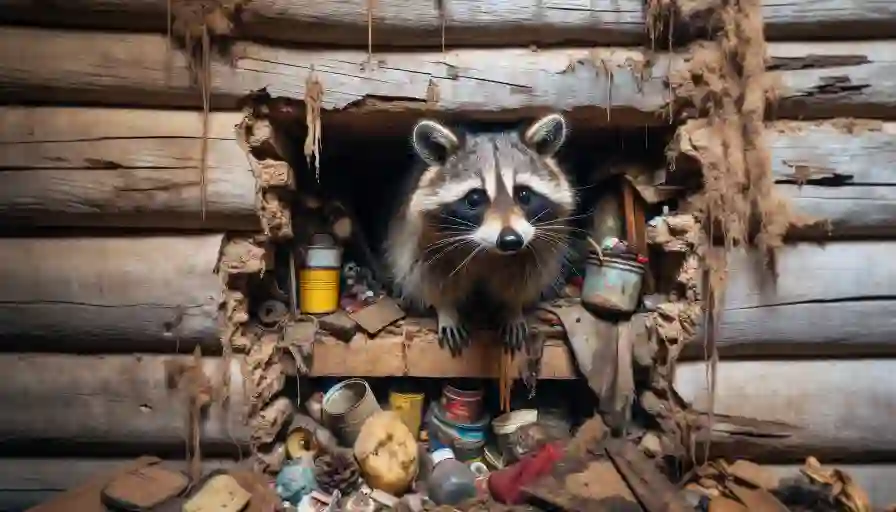
Let’s consider raccoons as the third possible animal in your wall. Raccoons aren’t very discreet in confined spaces. At night, you’ll hear loud scratching, scrambling, or chewing noises. These sounds might move to your ceilings, floors, ducts, or attic. When you hear noises in your wall, try knocking on nearby drywall. If you don’t hear the animal flee, move quickly, or freeze, it’s probably a raccoon. Raccoons chew on drywall, but they usually don’t chew on electrical wires. If you find chewed wires, it’s more likely to be squirrels.
4. Rats
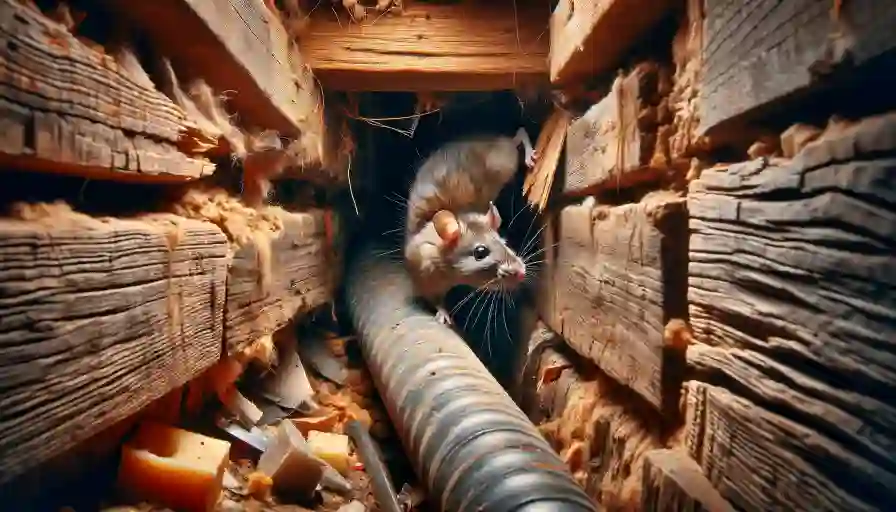
It can be tough to tell what animal is in your wall, especially when you are looking to distinguish between rats and mice. The reason is that they leave similar signs such as chew marks and rice-like droppings.
However, rats are noisier. They jump, fight, and explore, making more noise than mice. If you hear sounds in your pipes as well as your walls, it’s likely rats. Rats can swim and climb through pipes. We made a comprehensive guide on removing rats from your wall, so make sure to check it out.
5. Bats
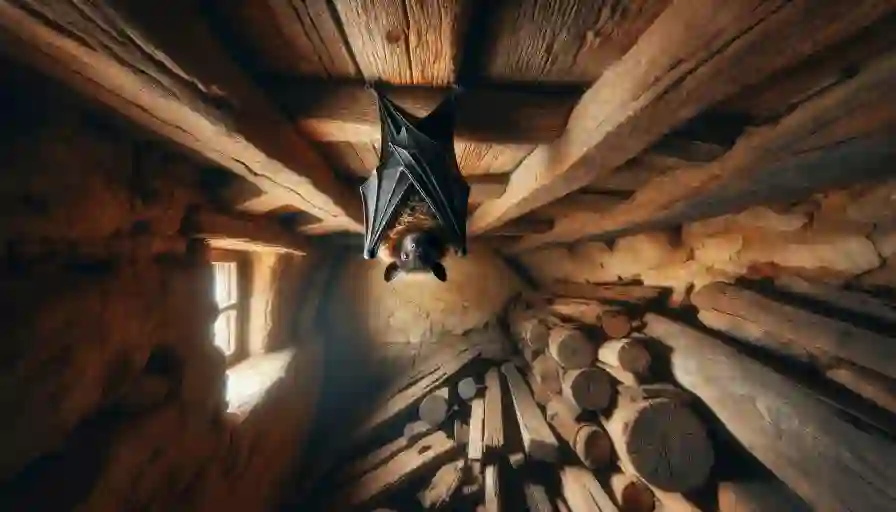
If you hear sounds in your attic or walls around dusk, and they sound like high-pitched chattering, you might have bats. If it’s during July or August, you should be able to tell what animal is in your wall if it’s a bat. You could also hear noises at dawn, as baby bats call for their parents to bring them food. Check your attic, if possible, for bat guano (droppings). Bat guano dries out and becomes powdery over time, which is a clear sign. Watch outside your home at dusk.
If you have bats, you should see and hear them leaving to find food. You may be able to encourage bats to leave on your own without an exterminator. Just set up a bat box in your yard or place a noise machine in your attic.
6. Chipmunks
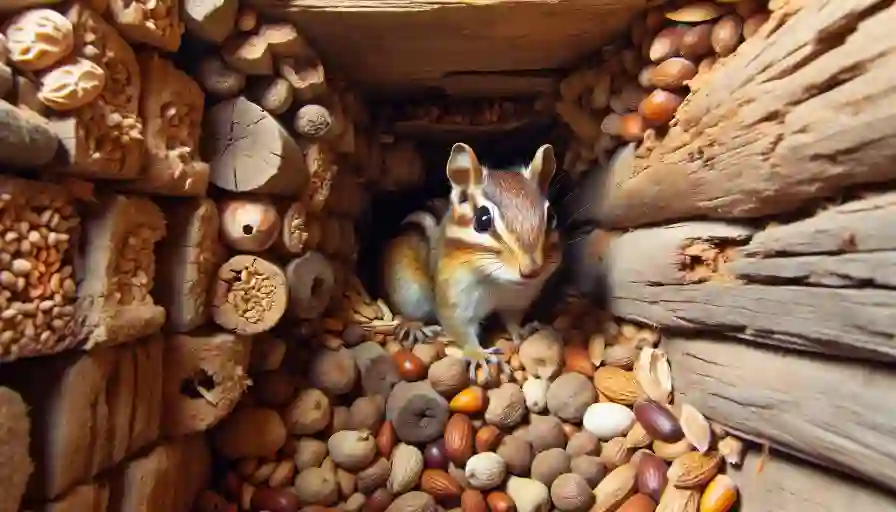
Chipmunks are another animal you could be dealing with in your walls. Let’s discuss how you can tell what animal is in your wall if it’s a chipmunk in there. If you hear random scratching sounds during the day, and they seem to come from various places, it’s probably chipmunks. These small animals are agile and will move from lower levels to gutters and back, storing food. Chipmunks sometimes make high-pitched chirping noises within your walls.
It’s hard to differentiate between chipmunks and squirrels in walls, but squirrels usually stay higher up, while chipmunks roam more broadly. Chipmunks are attracted to berries and nuts. If you grow these in your yard, promptly cleaning up any fallen produce can help keep chipmunks away.
7. Opossums

At number 7, we have opossums. They tend to create unique night noises, including hissing, shrieking, chattering, and clicking. The main clue you have opossums, though, is the smell. Opossum droppings have a strong odor, and when wet, they can soak into insulation or drywall, causing a stench. Opossums are particularly attracted to cat food. If you find your cat food in the basement or garage is frequently tampered with, it’s likely an opossum. Fortunately, just by keeping your home and its surroundings clean and free of accessible food, you may be able to deter opossums from lurking around.
Common Signs of Animals in Your Walls
1. Droppings
If there is an animal in your wall, you might find droppings near openings or around your house’s exterior. Check any holes in the walls first, then inspect your basement and attic. Lastly, walk around the outside of your house. Finding droppings is a strong indication of animals in your home.
Soft, dusty droppings in the attic usually mean bats. Rice-sized droppings along baseboards are a sign of mice or rats.
2. Gnaw Marks
Many animals that take up residence in walls will chew on drywall or joists. They might also chew on corners or cabinets to get inside your home. This behavior is most common in raccoons, rats, mice, and squirrels.
3. Strange Noises from Walls
You might hear sounds like scratching, fluttering, or yelping. A single noise like crumbling or cracking might be just the house settling, but consistent noise suggests there’s something in your wall.
Pay attention to the type of sound and when it occurs. For instance, chipmunks are active during the day, while mice are active at night.
4. Strong Odors
Wild animals have a strong smell. If there’s an unexplained foul odor in your house, it might be due to animals. If you can’t find the source of strange smells, there’s a good chance you have a critter in the walls.
A rotten smell often indicates opossums, known for their unpleasant odor.
5. Seeing a Live Animal
Animals living in your walls won’t stay there indefinitely. You might see them entering or leaving your home, especially in the case of rats and mice, who often invade walls to access food inside your house.
Hire a Professional for Animal Removal
While you can give it a try, removing an animal from your walls isn’t a simple task. The best method is to contact a pest control service to properly expel them with the right tools and also identify and seal any openings. If you have identified the animal in your walls causing the noise and damage, call a specialist to remove it. The exception is raccoons. If you have raccoons in your walls, you can generate a lot of noise to scare them away.
If dealing with squirrels, and they aren’t causing damage, you can usually leave them alone. They tend to stay temporarily and won’t live in your walls permanently.
Seal Entry Points to Keep Animals at Bay
If you manage to expel animals from your wall, the next step is to prevent their re-entry. Follow these simple measures to keep them out of your walls for good:
- If there are openings or gaps in your roof, repair them to block access to your attic.
- Fix any loose siding and trim tree branches overhanging your house to prevent animals from climbing onto your building.
- Store your garbage in a closed container away from your house and keep your living space clean to deter pests.
- Your bird baths and feeders do attract raccoons, squirrels, and other wildlife, so you might want to look into that too.
The animals that end up in your walls usually look for easy access. If it’s difficult to enter your home, they will likely go elsewhere.
Conclusion
If you hear unusual sounds, see animals, find droppings, or notice unexplained damage to your house, these could be signs that you have animals in your walls. The usual culprits are squirrels, rats, and mice, but it could also be raccoons, opossums, or bats. If you can’t get rid of them yourself, call a pest control professional to do the job.
Read Also: Mice in Ceiling Between Floors [What to Do]
